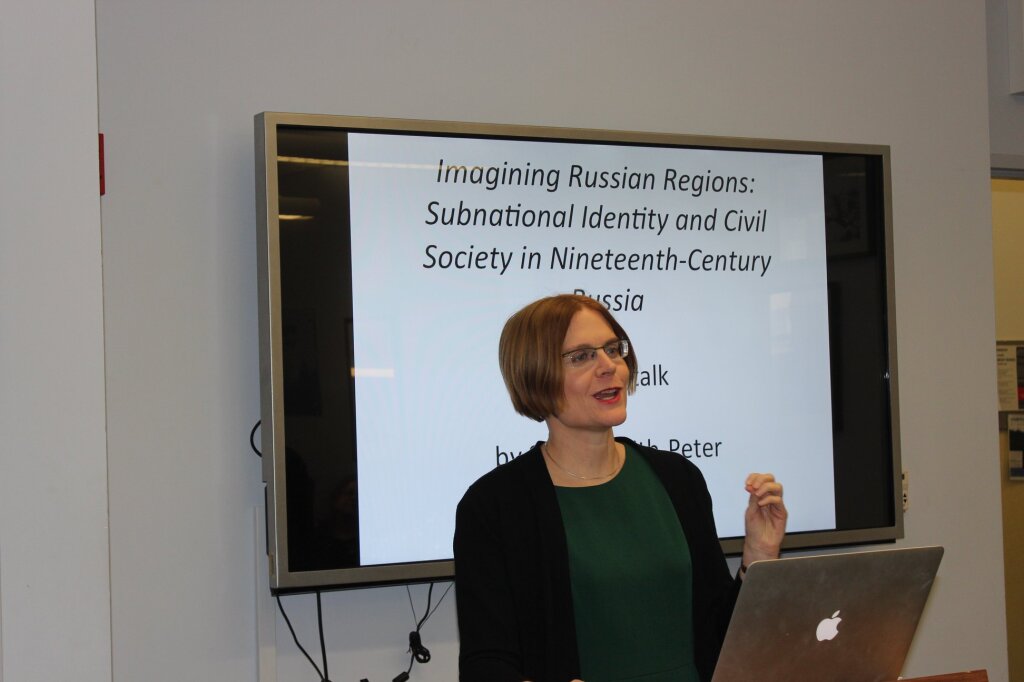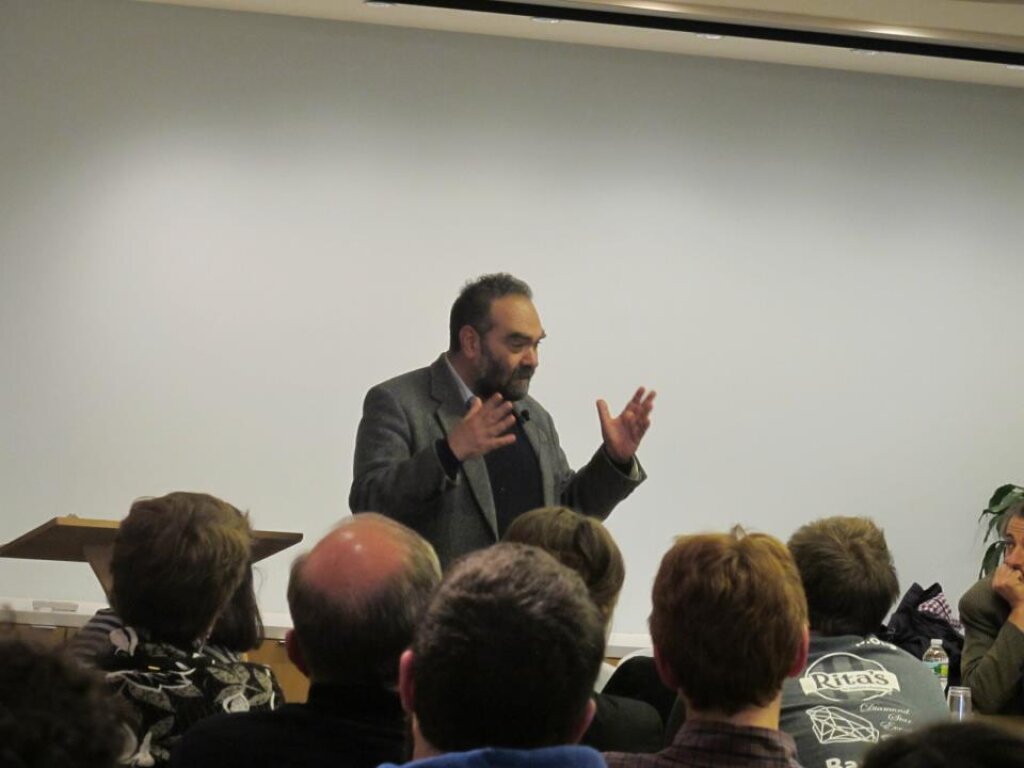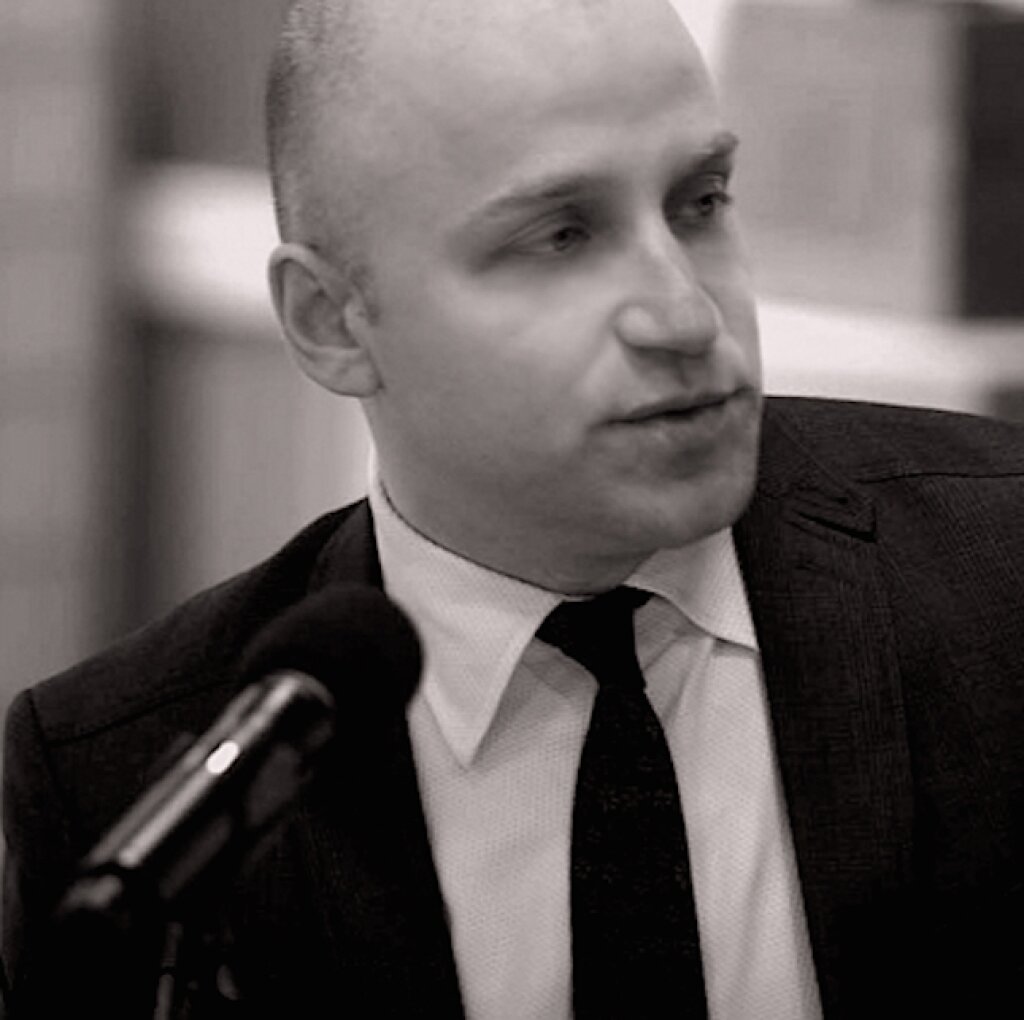Watch the event video here
On Friday April 6, the NYU Jordan Center hosted a talk with Susan Smith-Peter on her book, Imagining Russian Regions: Subnational Identity and Civil Society in Nineteenth-Century Russia. The talk was introduced by Anne Lounsbery, Associate Professor of Russian and Slavic Studies at NYU.
To understand civil society in the Russian context, it is necessary first to define the concept. According to Smith-Peter, civil society is “the space between the state and the family where people can take part in voluntary associations.” Development of civil society is often viewed as a means by which a country becomes modern. Historically speaking, many scholars consider that abolition of serfdom in 1861 marked beginnings of civil society in Russia. Smith-Peter argues, however, that looking only at this particular event as a catalyst ignores other complexities of the period.
The provinces served as a key location for politics in pre-reform Russia. Before 1861, these were the sites where the nobility governed itself at the provincial level. Nevertheless, many viewed the provinces as a largely insubstantial space. Gogol, for example, in his Dead Souls, depicted the provinces as an empty and inauthentic space, “lacking intellectual content but providing raw material for social history.” Antonio Gramsci viewed civil society in Russia as “primordial and gelatinous.” Recent work suggests that inhabitants of the provinces did possess self-awareness and agency, but such scholarship largely originates in the provinces themselves, and thus does not always receive the attention it merits. In the historiography of civil society, optimists argue that the rise of voluntary associations, particularly after 1861, showed the vitality of late imperial civil society; pessimists, on the other hand, contend that civil society saw peasants as separate, which resulted in a poorly-knit body politic. While Catherine the Great had advocated for the creation of institutions to strengthen civil society, Alexander III reversed the trend and rejected civil society.
The state’s need for particular information from the provinces, however, motivated the creation of civil society institutions. Such information was necessary for taxation, and the state lacked a sufficient number of bureaucrats to gather this data independently. Thus institutions were created under Nicholas I to “discover the provinces.” Such efforts subsequently led to the unexpected side effect of the consolidation of a provincial identity within the 30 years prior to the Great Reforms of the 1860s.
Smith-Peter’s book specifically focuses on the Vladimir province and its role as the site of agrarian and industrial economic development. The push to create institutions to “study” the provinces in the 1830s was also a part of the period’s “era of small reforms”, with a focus on building a Smithian civil society. Nicholas I was strongly influenced by Adam Smith and his ideas of transitioning society from a feudal state to a civil and commercial one. Thus, through the creation of such institutions as provincial newspapers and statistical committees, the state encouraged competition and stimulated the economy. Interestingly, the provincial public that emerged from these institutions was non-noble, mostly merchants and the sons of priests. In response, nobles created a district (uzed) identity that embraced the village and noble landed estates as the true Russia and the site of noble power. Additionally, such nobles were highly influenced by the German reception of Smith’s ideology, which highlighted a societal transition to a higher agricultural stage, rather than an industrial one. They wanted to avoid the creation of a proletarian Russia in fear that peasants would become alienated from the land; moreover, they saw peasants as incapable of living their lives without noble oversight.
During the 1840s, Hegel’s ideas changed many Russian nobles’ view of peasants. Hegel claimed that private property was linked to freedom, and he pushed for the end of serfdom. Consequently, as more political demands were made, conflict arose between Hegelians and the state. Initially, the state welcomed the input of provincial nobles on the peasant question, through the establishment of Provincial Committees on the Peasant Question; by 1859, however, the state shifted toward centralization and reinforced the idea of maintaining peasants as part of separate institutions after abolition, characterizing them as “a bulwark of the dynasty.”
In spite of the Hegelians protests’, peasants were ultimately given separate institutions at the sub-district level, which provided them with a sense of belonging to a body politic where the nobility had a very weak role. After the Great Reforms, civil society was taking shape, but the growth after 1861 was not sufficient to create a body politic that integrated all estates. What resulted was a multi-estate provincial society, but one whose provincial political claims were rejected by the state.
Smith-Peter concluded by noting several implications of these developments. First, the notion of applied intellectual history is a crucial one here; it is important to understand how these ideas were actually put into practice in the provinces and how they were received. Second, without the era of small reforms, we cannot understand the era of the Great Reforms. Third, the way in which the reforms codified civil society resulted in deep divisions between peasants and the state, and this weak relationship made itself evident during the test of World War I.
The talk was followed by a Q and A. One audience member asked, if the provinces were open for political activity under Nicholas I, an autocrat, was this also the case under Stalin? Smith-Peter noted that under Stalin, Russian regionalism returned to the status of the 1830s. There was civil activity at the local level, and regions reported on their economic development, but political regionalism was not so strong. A second question followed: was Smith-Peter’s choice to exclude from her discussion such terms as “center” and “periphery” a conscious one? Smith-Peter did not find such language helpful within the context of her discussion and in fact doesn’t view the provinces as peripheries. Moreover, she preferred to adopt primarily the terms used at the time.



